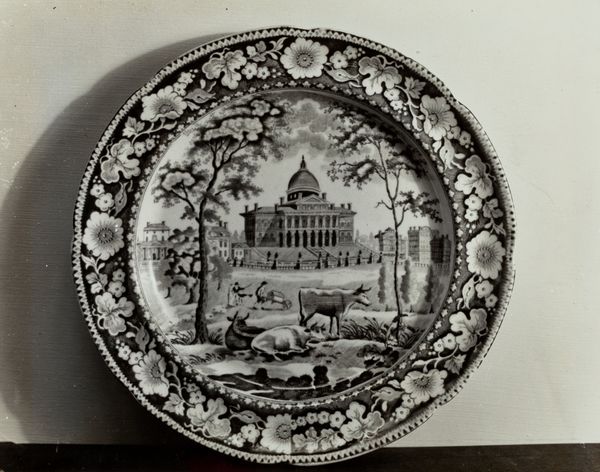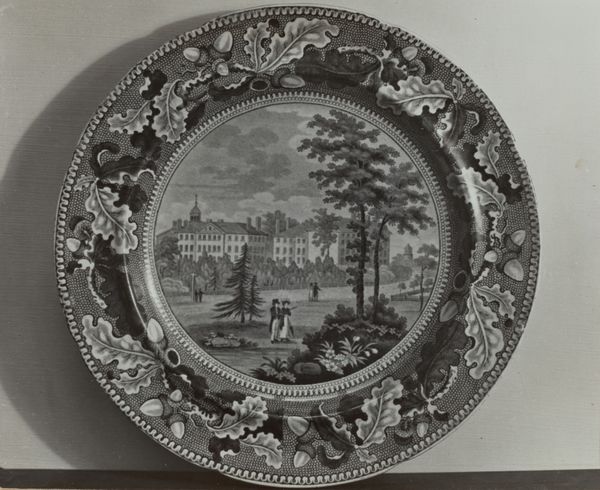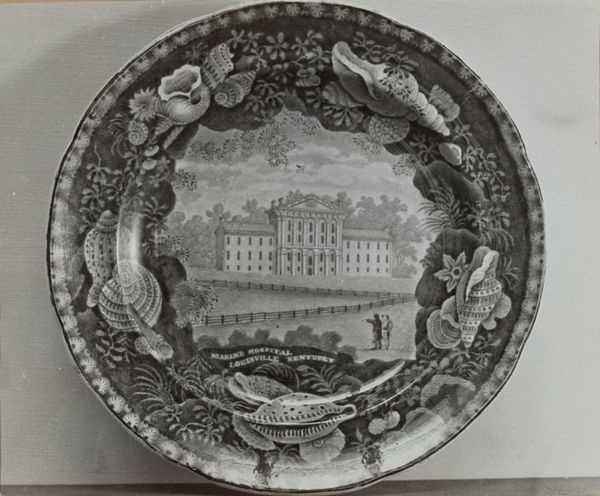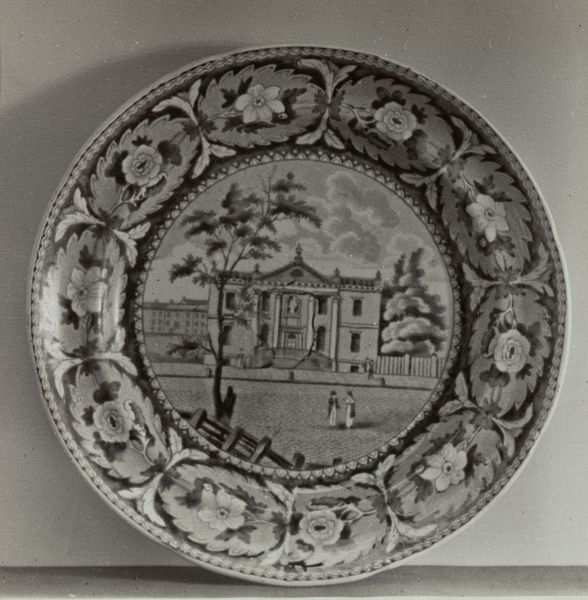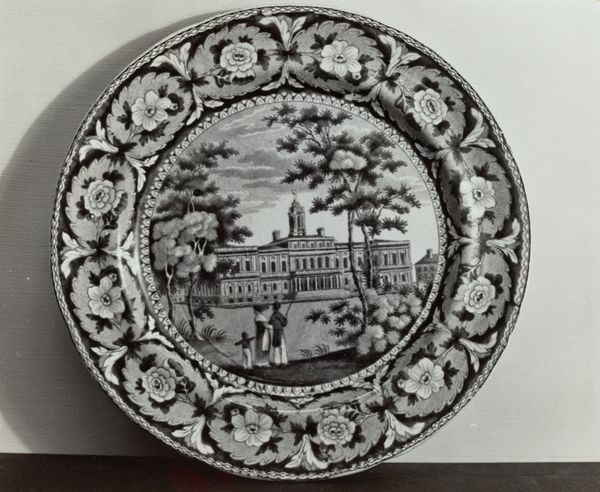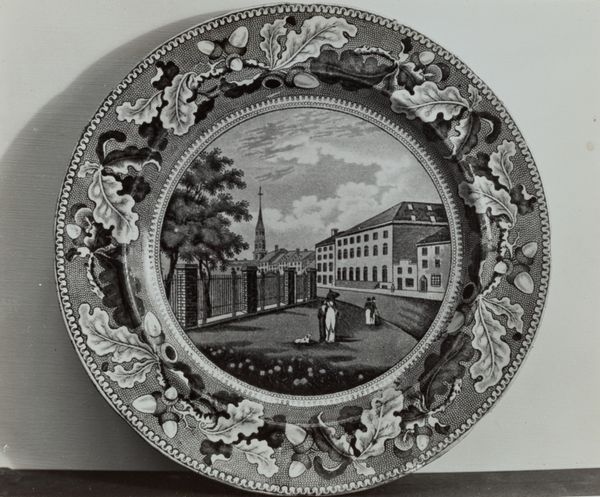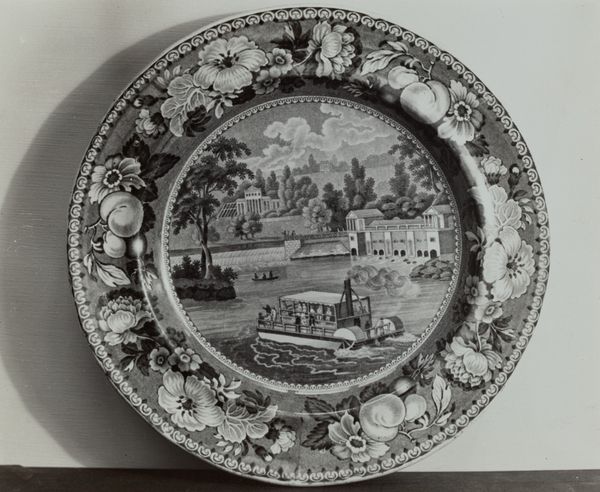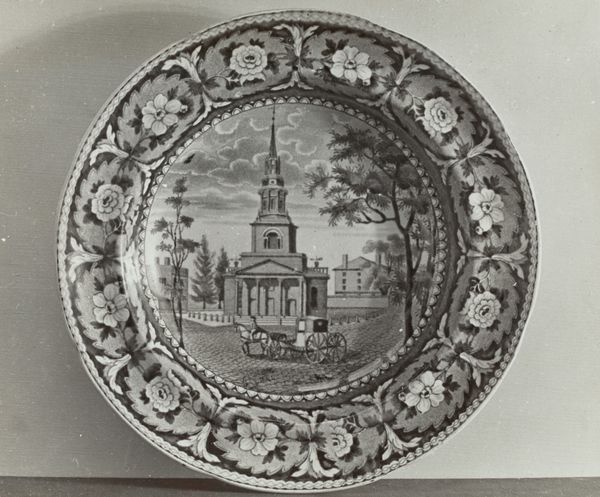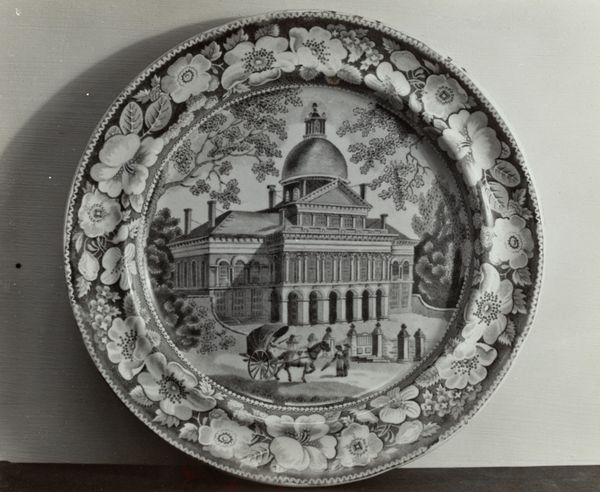
print, ceramic, earthenware
#
pictorialism
# print
#
landscape
#
ceramic
#
earthenware
#
cityscape
#
genre-painting
#
academic-art
#
realism
Dimensions: overall: 20.3 x 25.4 cm (8 x 10 in.) Original IAD Object: 14 5/8" long; 12 3/16" wide
Copyright: National Gallery of Art: CC0 1.0
Curator: Here we have an earthenware platter, dating to around 1936, titled "State House, Boston" attributed to Helmut Hiatt. It's quite a find. Editor: My first thought? Nostalgic, in a peculiar way. The muted tones lend it a sepia-toned, dreamy quality, like a memory viewed through a gauze. Curator: The design feels consciously antiquated, especially if you consider the wider historical context. There is the almost classical-style depiction of the State House sitting in the background—its clean lines are then set off by the almost kitschy landscape of farm animals and abundant flowers. I think Hiatt is cleverly exploring historical perspectives in its depiction of the landscape versus civic life. Editor: Mmhmm. Cows grazing placidly before the imposing seat of governance. The artist juxtaposes rural idyll and urban authority, creating this gentle friction. Given the period, were there specific political undertones about industrialization versus agrarian society? It might comment on whose interests are truly being served. Curator: Possibly. Though, Hiatt often aimed for evoking feeling more than overt commentary. I think the floral ornamentation might add a touch of whimsy, maybe downplaying the seriousness of statecraft, to make you reflect a little on what truly matters. I find it charming—although I do find the design a bit cloying, but the way it's all pressed into this rigid format just tickles me. It's weirdly comforting. Editor: It does domesticate power. By placing the State House on an everyday object like a platter, there is the feeling that the government, the seat of decision-making, is a part of everyday life, accessible even. The use of what appears to be ceramic or earthenware brings in the realm of craftsmanship and labor... Curator: But does that lessen the inherent hierarchies represented? Does art, especially when pressed onto dinnerware, ever actually flatten them, or just gently mock them? Editor: That's precisely the dialogue I think Hiatt's work invites. It’s not just pretty pastoral; it prompts considerations of access, representation, and even, perhaps, gentle rebellion. The question of who gets to enjoy this "state house"—both literally and symbolically—resonates. Curator: Indeed. Hiatt's vision—naive, maybe a little goofy—certainly leaves you thinking. Editor: Absolutely. The tension between idyllic representation and socio-political awareness is so thought provoking!
Comments
No comments
Be the first to comment and join the conversation on the ultimate creative platform.
